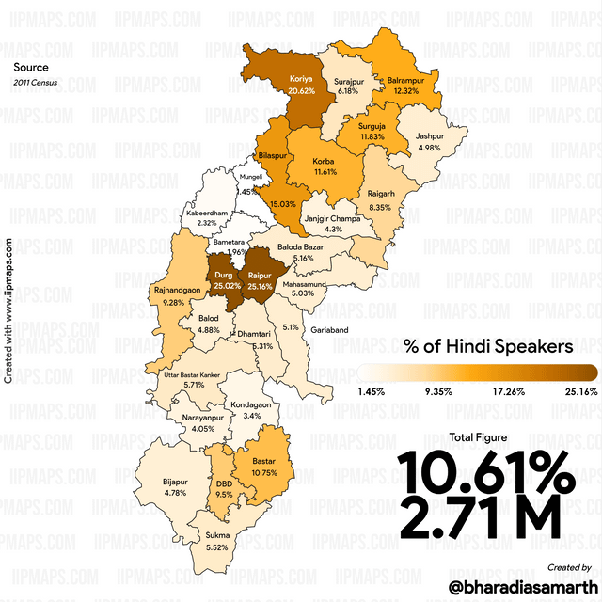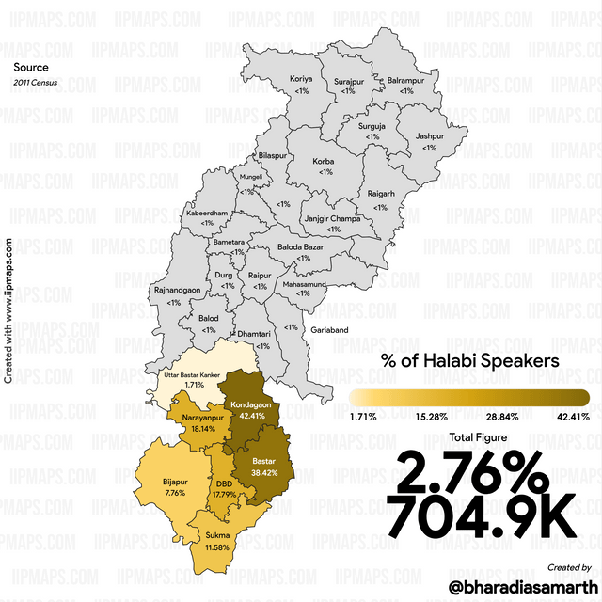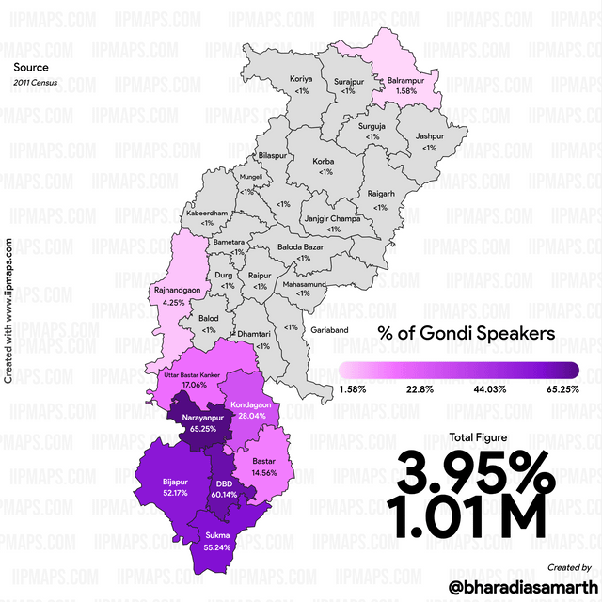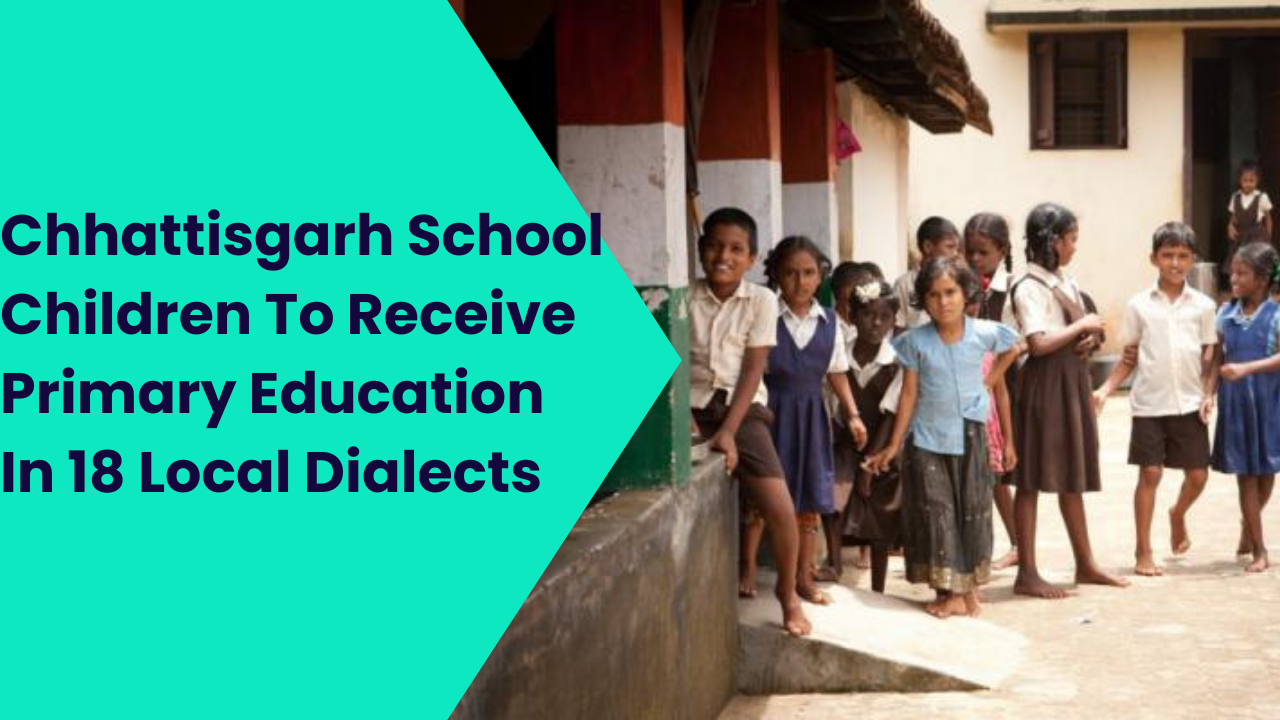Chhattisgarh School Children To Receive Primary Education In 18 Local Dialects : During the Shala Pravesh Utsava ( School Admission Fest-an enrollment encouraging programme in the beginning of new academic session) on July 5, 2024 in Bagiya village in tribal dominated Jashpur district, Chhattisgarh Chief Minister announced that textbooks and teaching materials of primary education classes would be translated in local languages and dialects, teachers would receive training for these.
Education department has been instructed to prepare and distribute bilingual books in 18 local languages and dialects.
On July 9, 2024 Chhattisgarh cabinet decided the same for primary education.
Will It Be Region-Wise ?
Yes. This initiative of early education in local languages and dialects by Chhattisgarh Government has been started keeping in mind the tribal populations of the state. As per government’s statements it can be said that how much percentages of class 1 students speak which local language and in which region of the state will be deciding factor of early education language.
हिंदी में पढ़ने के लिए अपनी डिवाइस स्क्रीन के ऊपर दाईं ओर 'Hindi' पर क्लिक करें।
How Many Local languages And Dialects And Which Are They ?
As above said, textbooks and teaching materials would be developed in 18 local languages and dialects as instructed by the government to the education department. As first phase of the initiative, tranlation and development started in Chhattisgarhi, Sargujiha, Halbi, Sadari, Gondi and Kudukh.
Language Map Of Chhattisgarh
Here are few local language maps of Chhattisgarh ;





Why This Decision ?
With the aim of more inclusivity and accessibility of the early education perticularly in the remote regions of tribal dominated parts of the state. Also with aim of alignment with the National Education Policy 2020, which advocates for primary education in local languages and three- language formula, which says Indian students should learn three languages- two native languages including one regional language and third one be English.
How Can It Improve Education In Chhattisgarh ?
One of the reasons for comparatively less enrollment in primary education in tribal regions of the state is elianation of the children from teaching and reading language. As Chhattisgarh’s literacy rate is 70.28%, which is less than national everage of 76%. Including local languages and dialects as educational medium will definitely reduce above said elianation.
Other States Which Have Introduced Lacal Languages As Medium Of Education ?
Following states have/are taking initiative to impart primary education tocommunities of their states:
| State | Primary Education In |
|---|---|
| Odisha | 21 indigenous languages |
| Jharkhand | Mundari, Ho and Santhali |
| Maharashtra | Marathi, Varhadi and ohter languages |
| West Bengal | Bengali, Santhali and other local languages |
| Madhya Pradesh | Bhili and Gondi |
| Rajasthan | Wagdi and Garasiya |
| Gujrat | Gujrati, Bhili |
| Karnataka | Kannada and local dialects |
| Tamil Nadu | Tamil and other local dialects |
| Kerala | Malayalam and local dialects |
| Andhra Pradesh | Telugu and local languages |
| Telangana | Telugu and local languages |
| Assam | Asamese, Bodo and other local languages |
| Meghalaya | Khasi, Garo and other local languages |
| Nagaland | Ao and Angami |
Recently Bihar has decided to impart medical education in Hindi also. Earlier Madhya Pradesh has done the same. While Tamil Nadu, Andhra Pradesh and Uttar Pradesh are imparting engineering educations in hindi and other regional languages.
What Happens If Early Education Is Imparted In Local Languages ?
Here are few statements of the government and people associated with this kind of initiatives :
" You can learn to read and write best in the language that you know. If you are taught in a language you don't understand then comprehension doesn't occur and results in rote memorisation and writing it out through copying."
" Good learning happens when children have high self-esteem, are well adjusted in a classroom that provide a positive and fearless environment. If the child is taught in a language they do not understand, none of these will happen."
- Dhir Jhingaran, former IAS and founder of Language and Learning Foundation, an organiation working with states of Rajasthan, Chhattisgarh and Haryana to prepare and develop study materials in local language and train teachers to use it.
"If the children learn and write in the same language that it hears and speaks in its early days, the child's ability to use logic, express thoughts and do analysis will develop significantly"
- Then Union Education Minister Dharmendra Pradhan in an event in Odisha in Nov, 2023.
What Government Says ?
Chief Minister Vishnu Deo Sai Said-“The new initiative of providing education in local languages will also be helpful in preserving local culture and traditions.”
School Education Secretary Siddharth Komal Pardeshi said that textbooks and teaching materials of primary education would be developed in Chhattisgarhi( spoken by 65.83% students of class 1), Sargujiha(spoken by 9.38%), Halbi(4.19%), Sadari(3.97%), Gondi-Dantewada(2.33%) and Kudukh(0.7%).
Sample Translation From English/Hindi To Few Of These Dialects ?
English
Hello Chhattisgarh ! How are you ?
Hindi
नमस्ते छत्तीसगढ़! आप कैसे हैं ?
Chhattisgarhi
"नमस्ते छत्तीसगढ़! तैं कइस हस?"
Sargujiha
"जुहार सरगुजा! तें कैस हस?"
Halbi
"राम राम छत्तीसगढ़! तुम कसा आहिस?"
Sandari
"जोहार छत्तीसगढ़! तुमन कइसे हव?"
Gondi
"लाज वन्हा छत्तीसगढ़! निनंना कैसेरा?"
Kudukh
"नमस्कार छत्तीसगढ़! निनंदे केराहें?"
Any Committee, Which Suggests Early Education In Local Languages And Dialects ?
Kothari Commission Report on Education and National Development(1964-66) suggests that medium of instructions and textbooks in first two years of primary education should be in local tribal languages. Regional languages should be included and taught seperately and become medium of instructions by the third year.
What Constitution And Laws Say ?
Article 350(A) of the constitution states that every state and local authority should attempt to provide- “Adequate facilities for instructions in the mother-tongue at the primary stage of education to children belonging to linguistic minority groups.”
Right To Education Act 2009, also suggests that medium of intructions in primary education for children should be in mother-tongue as much as possible.
FAQs
Who will help Government to translate into dialects ?
This project will involve help of literatures, folk-artists and compilers across the state.

